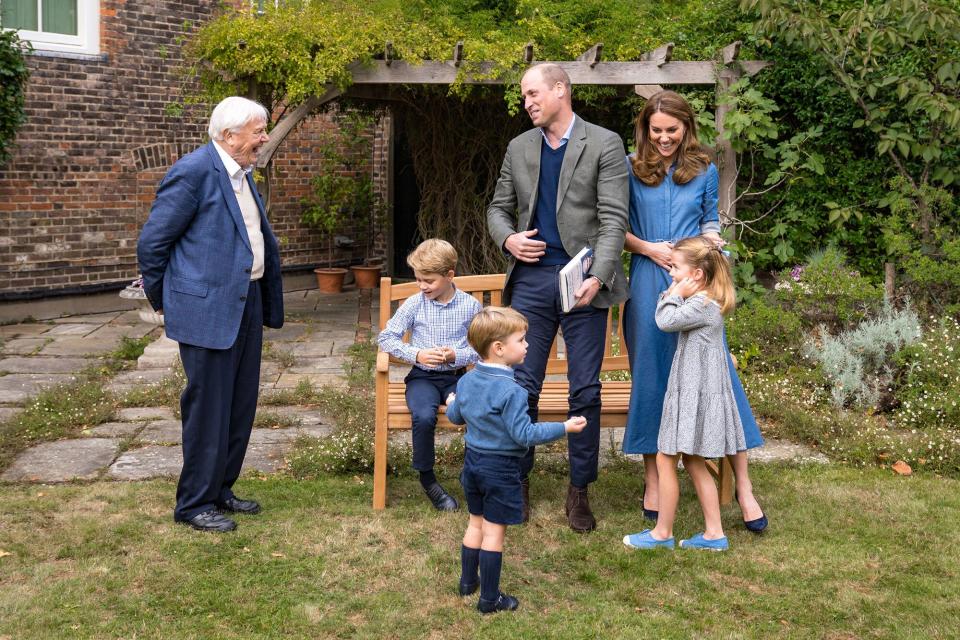Kensington Palace Among Royal Residences Being Investigated for Ties to Slave Trade

DeAgostini/Getty Images Kensington Palace
A top-level investigation into ties between royal palaces and the slave trade is underway at historic royal residences, including the Kensington Palace home of Prince William and Kate Middleton.
Historian Lucy Worsley, who is the lead curator of public storytelling at the palaces, admits that “we haven’t done well enough.”
The TV presenter and head curator of the Historic Royal Palaces charity, which oversees access to the royal homes, tells The Times that Kensington Palace will likely be featured in the investigation, which has been prompted by the Black Lives Matter movement.
Historic Royal Palaces is in the process of recruiting a $50,000-a-year “talented, experienced and creative” Curator of Inclusive History to engage with new audiences.
A spokesperson for Historic Royal Palaces tells PEOPLE in a statement, “We cannot ignore the fact that for hundreds of years colonialism and empire, enslavement and exploitation were part of our national story. As seats of power, the palaces in our care are connected to that history. We expect the research will address this in more depth.
“Equally, we know we must do more to celebrate the contribution made by the minority communities who have lived and worked at the palaces for hundreds of years. There are many untold stories to explore.”

Kensington Palace Prince William and Kate Middleton with children and Sir David Attenborough at Kensington Palace recently
Worsley tells the U.K. newspaper, The Times, on Wednesday that any property, like Kensington Palace, that was used by the Stuart dynasty (which is considered to have ended with the death of Queen Anne in 1714) was going to have evidence of profits from the slave trade. Slavery was abolished in Britain and throughout its empire in 1807, but slavery itself wasn’t halted by law until 1838, granting freedom to all slaves in the British empire.
Historic Royal Palaces is looking at how they describe and interpret the decorations and artwork in the interiors of palaces like Hampton Court and Kensington Palace.

Matt Kent/WireImage Hampton Court Palace
Kensington Palace was re-modeled by the Stuarts, Worsley points out. “Anything to do with the Stuarts is going to have an element of money derived from slavery within it,” she told the outlet. “Anne’s really interesting because there’s one view of her which is that she brought the nation together and she made it successful.”
“There’s another view, which is that she made it the most successful slave-trading nation in the world and that it was only a coming together if you were a white, well-off bloke," she added.

Simon Perry Lucy Worsley at Hampton Court Palace
Can't get enough of PEOPLE's Royals coverage? Sign up for our free Royals newsletter to get the latest updates on Kate Middleton, Meghan Markle and more!
Historic Royal Palaces is following in the wake of other British institutions that have been looking at their heritage and whether they need to change the presentations and story.
Worsley, who has presented several well-regarded historical documentaries, adds, “We’ve been thinking really hard and planning all sorts of changes. The time has come. We’re behind. We haven’t done well enough.”
She admits that Kensington Palace, for one, does not reflect the story of slavery’s role in the royal court — or British society — for its tourist visitors.
And the move comes after a statue of a slave trader was toppled and thrown in the river in the western England city of Bristol, the port of which thrived under the trade, in June.
In July, Prince Harry spoke out about Britain's colonial past, saying, "When you look across the Commonwealth, there is no way that we can move forward unless we acknowledge the past ... We all acknowledge there’s so much more still to do. It’s not going to be easy and in some cases, it’s not going to be comfortable ... And guess what, everybody benefits.”
Harry then added that the Black Lives Matter movement has allowed for people to recognize "the wrong" in the world, adding that " this is the moment when people are starting to be listened to.”


